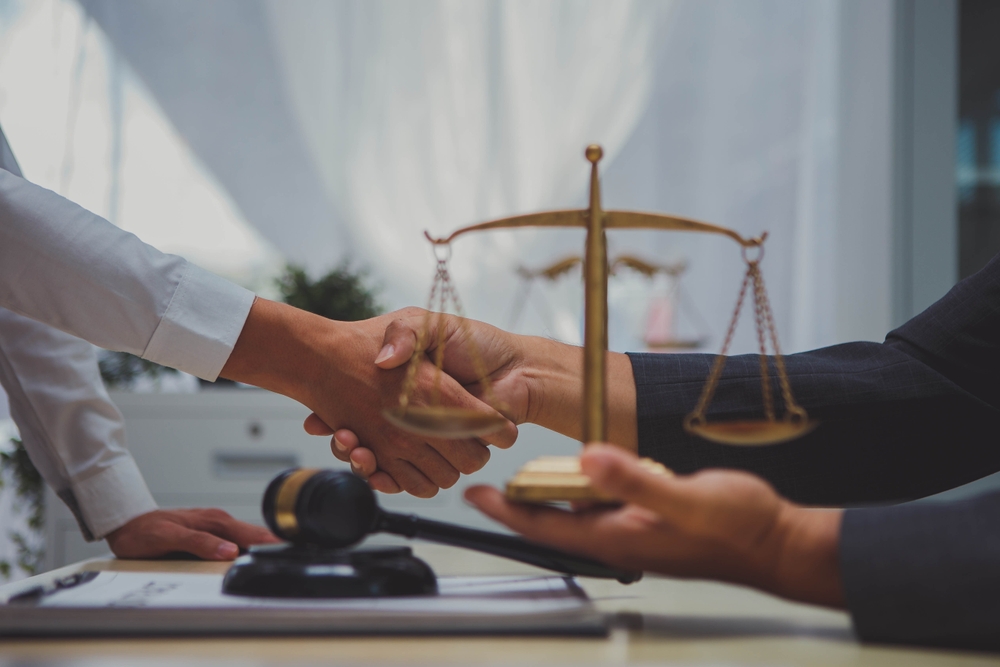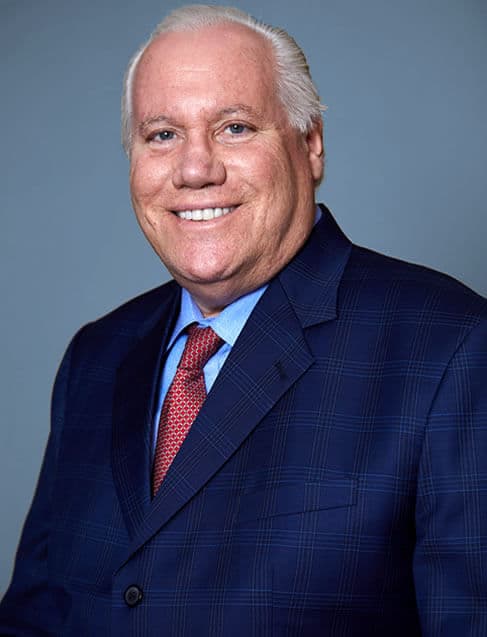Your injury may feel like a private burden, but it often has a public cause. When a driver ignores traffic laws, a store manager neglects a spill on the floor, or a construction company cuts corners on safety, their choices have real-world consequences for people like you.
These situations are not simply "bad luck." They are examples of negligence and form the basis of what the law calls a personal injury case. This civil claim allows an injured person to pursue financial compensation from the party whose carelessness caused harm.
It is a legal tool designed to help you pay for medical care, cover lost wages, and account for your pain and suffering. Contact our Westchester personal injury lawyer for free consultation today!
Schedule a Free Case Evaluation
The Core Principles of a Personal Injury Case
At its heart, a personal injury claim is based on two fundamental ideas: negligence and damages. For a claim to be successful, you must show that another party was negligent and that their negligence directly caused you to suffer damages.
Negligence is a legal concept that means someone failed to act with reasonable care, resulting in harm. It is not about intentional harm, but rather about carelessness or recklessness. Your case must demonstrate four specific elements to prove negligence in New York.
- Duty of Care: The other party had a legal responsibility to act with a certain level of caution toward you. For instance, all drivers on the road have a duty to operate their vehicles safely to avoid harming others.
- Breach of Duty: The party violated that duty. A driver who runs a red light or a property owner who fails to clean up a spill has breached their duty of care.
- Causation: This breach of duty was the direct cause of your injuries. You must show a clear link between the careless act and the harm you sustained.
- Damages: You suffered actual losses because of the injury. These are the measurable costs associated with the incident, such as medical expenses, lost income, and pain.
Damages are the quantifiable losses you have incurred. Without them, there is no basis for a claim. These losses form the foundation of the compensation you may seek.
The types of damages you might recover include:
- Medical treatment costs, both past and future.
- Lost wages from being unable to work.
- Diminished future earning capacity.
- Physical and emotional pain and suffering.
Common Personal Injury Claims
Many different situations can lead to a valid claim. While each case is unique, most fall into several broad categories. These incidents happen every day across Brooklyn, Queens, Westchester, and throughout the New York area, leaving people with serious and life-altering consequences.
Injuries from vehicle accidents
Roadway collisions are a leading cause of preventable injuries. When a driver acts carelessly, they put everyone around them at risk. These incidents are not just "accidents"; they are the result of specific, negligent behaviors.

Common causes of vehicle collisions that may lead to a claim include:
- Distracted driving, such as texting or talking on the phone.
- Speeding or driving too fast for road conditions.
- Driving under the influence of alcohol or drugs.
- Making unsafe lane changes or sudden turns, such as in a T-bone crash.
- Failing to yield the right of way, including in "suicide gap" scenarios where another driver incorrectly waves you into moving traffic.
Harm from unsafe work sites
New York law provides strong protections for workers, particularly those in the construction trades. Employers and property owners have a legal obligation to provide a reasonably safe environment. When they fail to meet this standard, and a worker gets hurt, they can be held financially responsible for the resulting harm. The focus is on the conditions of the workplace, not just the actions of a single individual.
These claims often arise from incidents involving:
- Falls from ladders that were not properly secured.
- Scaffold collapses due to improper assembly or maintenance.
- Injuries from falling objects or debris.
- Accidents involving heavy machinery or faulty equipment.
Medical malpractice
We place immense trust in doctors, nurses, and other healthcare providers to care for us. When a negligent mistake breaks that trust, the consequences are always devastating.
Medical malpractice occurs when a healthcare professional deviates from the accepted standard of care in their field, causing injury or death to a patient.
These are not cases of a bad outcome, but rather a bad outcome caused by a provider's failure to provide competent care.
Examples of medical malpractice include:
- Misdiagnosis or delayed diagnosis: Failing to identify a serious condition like cancer or heart disease in a timely manner.
- Surgical errors: Operating on the wrong body part, leaving a foreign object inside a patient, or causing nerve damage during a procedure.
- Birth injuries: Mistakes made during labor and delivery that cause harm to the mother or child, such as cerebral palsy or Erb's palsy.
- Medication errors: Prescribing the wrong drug, administering an incorrect dosage, or failing to account for harmful drug interactions.
Slip and fall incidents
Property owners and managers are responsible for keeping their premises reasonably safe for visitors. This applies to grocery stores, apartment buildings, parking lots, and private homes.
They may be liable when they fail to address a known hazard and someone gets hurt.
A successful slip and fall claim requires showing that the property owner either created the dangerous condition, knew about it and did nothing, or should have known about it through reasonable maintenance.
Common causes of these incidents are:
- Wet and slippery floors without warning signs.
- Icy or snowy sidewalks that have not been cleared.
- Poorly lit stairwells or hallways.
- Uneven pavement or potholes in a parking lot.
- Loose carpeting or damaged flooring.
Other serious personal injury situations
Beyond these common categories, personal injury law also covers other severe forms of harm. These cases often involve life-altering injuries or tragic loss and require a sensitive and determined approach to secure justice for the victims and their families.
Some of these situations include:
- Traumatic Brain Injuries (TBI): Caused by a blow to the head in a fall, collision, or other incident, a TBI can have lifelong cognitive, physical, and emotional effects.
- Wrongful Death: When someone's negligence leads to the death of another person, the surviving family members may file a wrongful death claim to seek compensation for their immense loss, including loss of financial support and companionship.
- Sexual Abuse: Civil lawsuits can hold abusers and the institutions that enabled them accountable for the profound and lasting harm they inflicted.
What to Do After You Are Hurt: Protecting Your Personal Injury Rights
Once you have returned home from receiving initial medical care, the steps you take can significantly impact your ability to recover fair compensation. The time immediately following an injury is a critical period for gathering information and documenting the effects of the incident on your life.
Follow this sequence of actions to protect your well-being and your legal rights:

- Document your injuries and recovery: Keep a detailed journal. Write down your pain levels, physical limitations, and how the injuries affect your daily activities. Take clear, well-lit photos of your injuries as they heal over time.
- Adhere to all medical advice: Follow your doctor's treatment plan without deviation. Attend all follow-up appointments, physical therapy sessions, and consultations. This shows you are taking your recovery seriously and creates a clear medical record.
- Organize your paperwork: Create a folder for all documents related to the incident. This file should contain everything from medical bills and receipts for prescriptions to letters from insurance companies and records of your missed work days.
- Decline to speak with other insurers: The at-fault party's insurance adjuster may call you seeking a recorded statement. You are not obligated to provide one. These conversations are often designed to get you to say something that could weaken your claim. It is best to decline politely until you have spoken with a lawyer.
- Limit your social media activity: Insurance companies often review claimants' social media profiles for any evidence they can use against them. A single photo or post, taken out of context, could be used to argue your injuries are not as severe as you claim.
- Consult a legal professional: Discussing your case with a lawyer who handles personal injury matters can provide clarity on your rights and options. An initial consultation allows you to get answers to your questions and learn about the process.
Frequently Asked Questions About Personal Injury Law
When facing a potential legal claim, you are bound to have questions. Here are answers to some common inquiries.
How much does it cost to hire a personal injury lawyer?
Most personal injury attorneys work on a contingency fee basis. This arrangement means you do not pay any upfront fees. The lawyer's fee is a percentage of the final settlement or court award they obtain for you. If they do not win your case, you owe them no legal fees.
Benefits of a contingency fee include:
- No financial risk to you.
- Access to legal representation regardless of your financial situation.
- The lawyer is motivated to secure the best possible outcome.
How long do I have to file a claim in New York?
Every state has a time limit, known as the statute of limitations, for filing a lawsuit. In New York, the general time limit for most personal injury cases is three years from the date of the injury. However, there are exceptions that can shorten this window.
Examples of different time limits include:
- Claims against a city or municipality may require you to file a notice of claim within 90 days.
- Medical malpractice cases have a shorter time limit of two and a half years.
- Wrongful death cases must typically be filed within two years of the person's death.
What is my personal injury claim worth?
The value of a claim depends entirely on the specific damages you suffered. There is no formula for calculating a precise amount. A lawyer will evaluate all of your losses to determine a fair value for your case.
Factors that influence a claim's value include:
- The total cost of your past and future medical care.
- The amount of income you have lost and will lose in the future.
- The severity and permanence of your injuries.
- The impact of the injuries on your quality of life.
Will I have to go to court for my case?
The vast majority of personal injury cases are resolved through a negotiated settlement without ever going to trial. A settlement is an agreement between you and the at-fault party's insurance company to resolve the claim for an agreed-upon amount of money.
Reasons why most cases settle include:
- Trials are costly and time-consuming for both sides.
- A settlement provides a certain outcome, whereas a trial verdict is unpredictable.
- Resolving the case allows you to receive your compensation sooner.
Charting Your Path to Recovery
If another person's negligence has turned your life upside down, you have the right to seek justice and compensation. The harm done to you was not your fault, and you should not have to bear the financial burden alone.

Taking action allows you to secure the resources needed to heal and move forward.
The attorneys at Queller Fisher are dedicated to helping injured people across New York City, including Brooklyn and Queens, as well as in Westchester, Nassau, and Suffolk counties.
Our firm has fought for individuals and families affected by serious injuries for decades, securing meaningful results that provide for their futures. We handle all personal injury cases on a contingency fee, so you pay nothing unless we win.
Please contact our office to discuss your case in a free and confidential consultation.
- You can reach us at 212-406-1700 to speak with a member of our team.
- We will listen to your story and provide clear guidance on your legal options.
- Our team is prepared to manage every aspect of your claim so you can focus on your recovery.